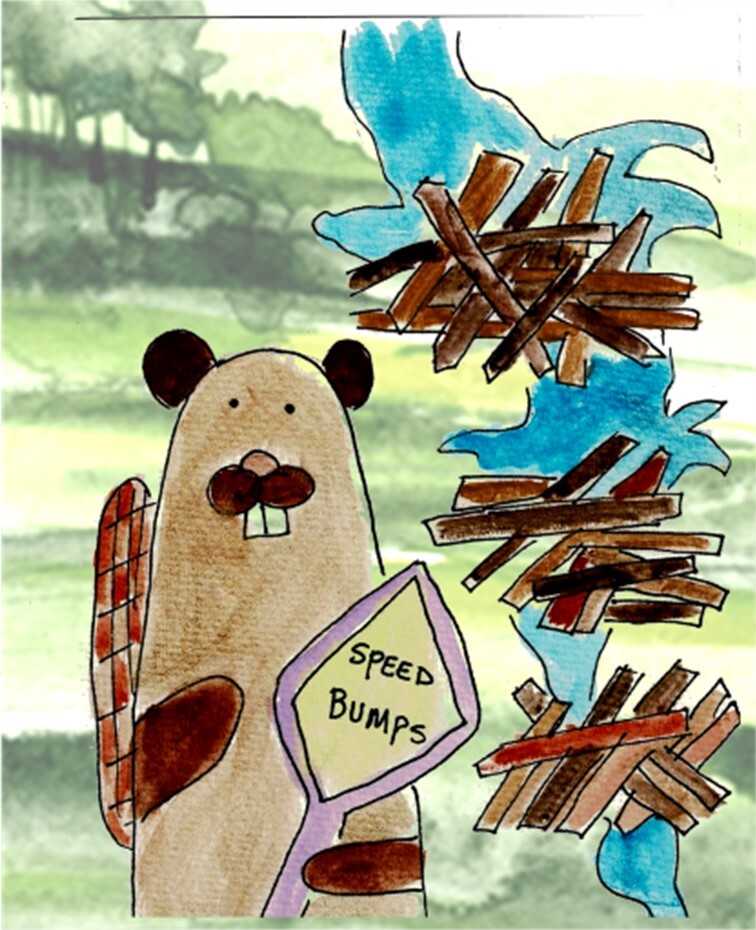The stupidest headline I’ve ever read on phys.org.
Are wetlands really a flood risk? Experts debunk most common myths around these precious ecosystems
See wetlands must cause flooding because places with big wetlands like the bayou and the everglade are always flooded. AmIrite?
Why do myths and legends surround wetlands?
From mangroves and seagrass beds to peatlands, reedbeds and grasslands, wetlands are not only inundated with water, but also mystery.
Bog bodies—naturally mummified human cadavers—have been getting dragged out of peatlands for decades, spreading fear among Europeans.
Dr. Alexandra Barthelmes is a senior researcher at the University of Greifswald and Greifswald Mire Center in Germany. She works alongside more than 50 passionate peatland scientists, many of whom are also involved in WET HORIZONS. Her team provides geographic information on Europe’s peatlands for the project.
“Many people believe it is dangerous to go to peatlands as they are worried that they will get there and just sink—but this is not true. You may sink in up to your knees, but you would have to work very hard to bury yourself.”
“Of the bog bodies found, many have had injuries and it seems others were sacrificed in some way,” she adds. “All the evidence indicates that most of the people were taken there on purpose as they simply didn’t ‘belong’—so peatlands being these places of danger really is an age-old myth.”
Really? Watch out for wetlands because you might sink in them?
The danger of sinking to your death is just one of myriad myths that European wetland experts are now racing to dispel as they strive to restore these ecosystems.
“We’ve been able to spread shredded pieces of peat moss in formerly drained peatlands, with a lot of success,” she says. “And if Sphagnum is successfully reintroduced and the water table kept stable, we find that many other specific bog species return.”
Once established, the Sphagnum stores carbon, reducing carbon dioxide emissions, and also helps to prevent the release of pollutants into ground and surface water.
Meanwhile habitats for threatened species can be created. And if harvested the moss serves as a perfect substitute for the peat-based substrates still used by large- and small-scale farmers to grow vegetables.
This critical source of agricultural revenue also dispels a third common myth: that wetlands are doomed to become economic wastelands.
n each case farmers can earn money from the sale of the biomass, the saved CO2 emissions and also from agricultural subsidies they may receive. For many paludiculture projects, the production chains are ready, making large-scale implementation the next critical step.
Huh this is a shock! Wetlands aren’t useless and you won’t sink in them. Apparently some English people are very very stupid. (Now don’t be alarmed. I am married to one and can say for a fact that is without a doubt true…)
Are wetlands a flood risk?
Revenues aside, many perceive wetlands to be a flood risk, whereas the opposite is actually true.
Whaaaatt?
Nature’s wetlands store flood water during storms, acting like natural sponges that soak up surface run-off and slowly release it later.
But once wetlands are drained to create farming land, with grassland replaced by crops such as wheat and maize, flooding risk rises. Factor in how fields are left bare over winter—drastically increasing surface water run-off—and drained regions can pose a real problem.
“Wetlands are only a flood-risk after they have been drained for [agricultural] use,” says Barthelmes.
Well good luck to you, Barthelmes. you have your work cut out for you myth busting among the beavers-eat-fish crowd. Maybe this sagely illustrative graphic will help. Let me know if you think it’s too advanced for folks up there to understand:







































